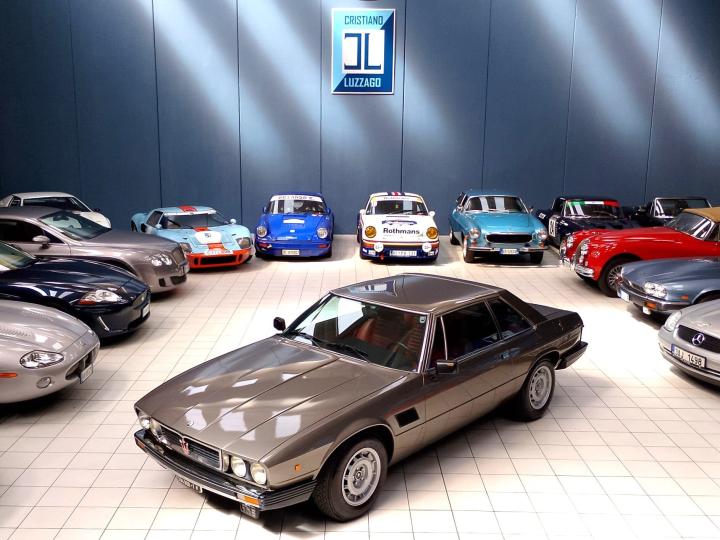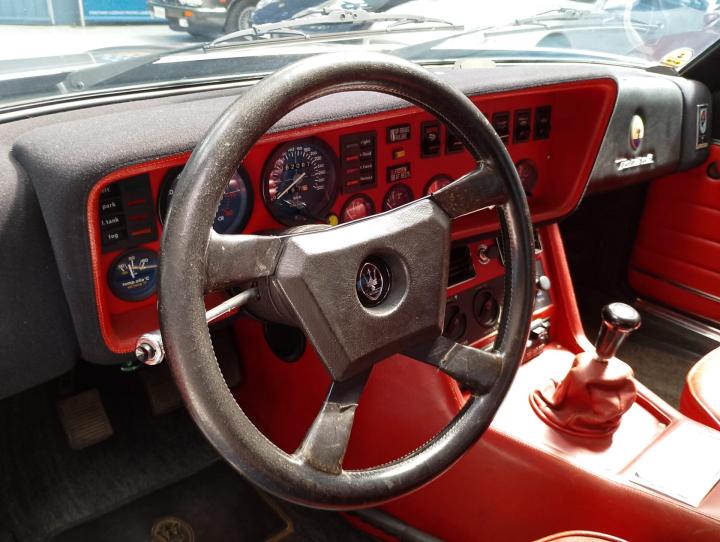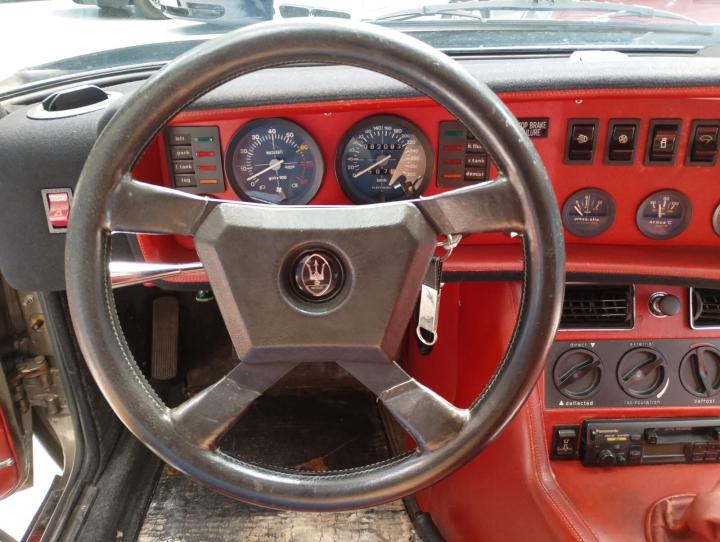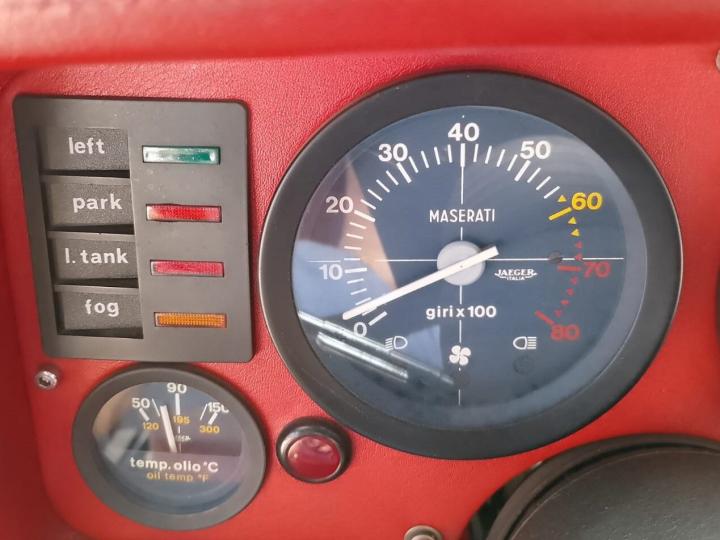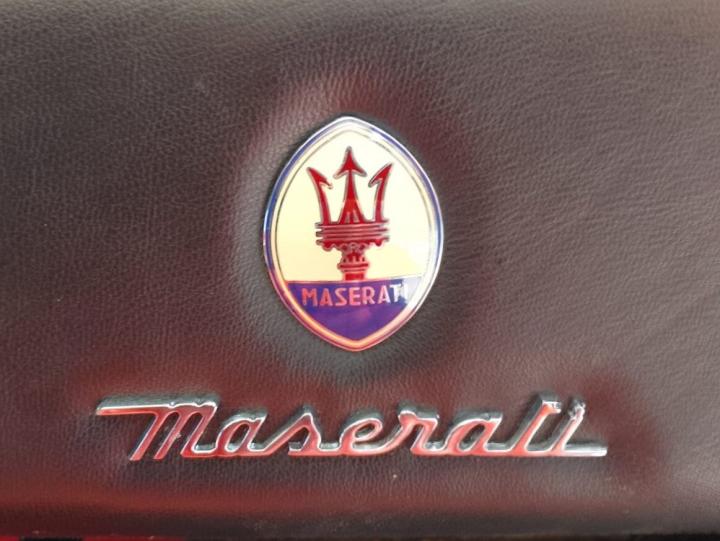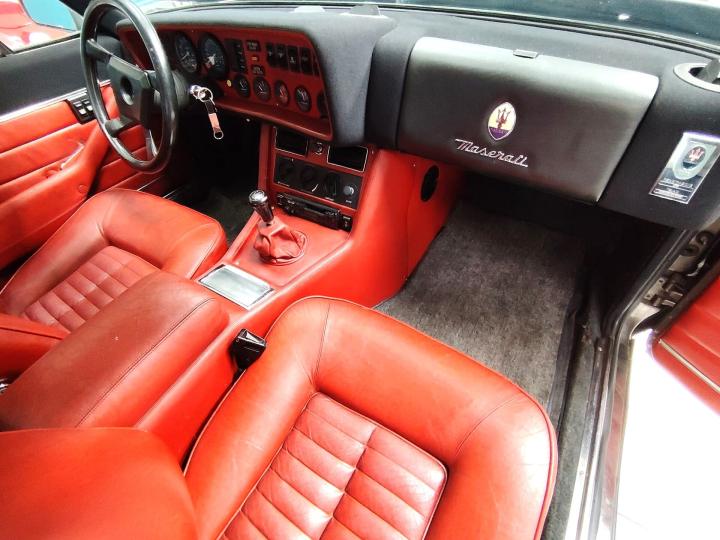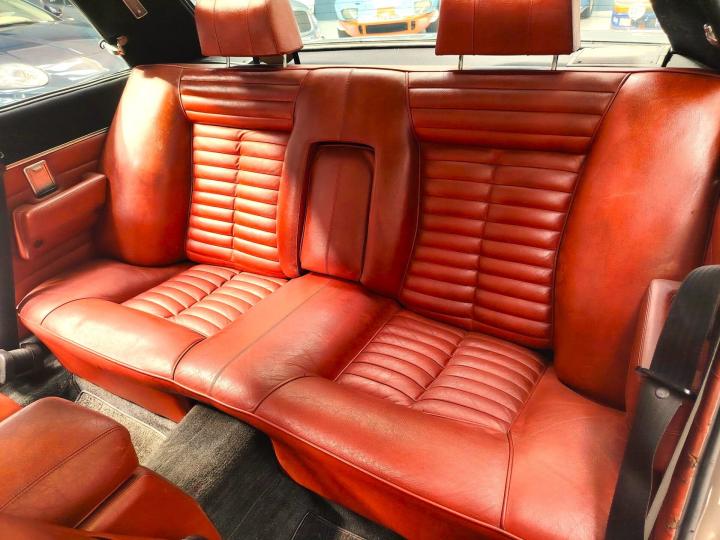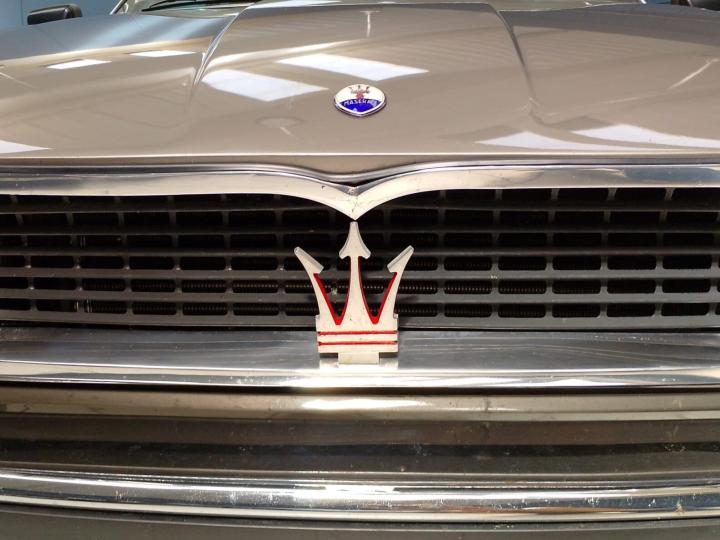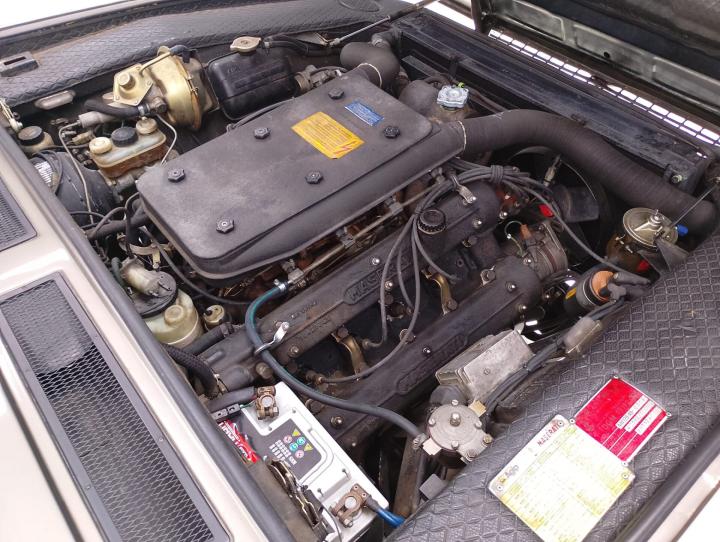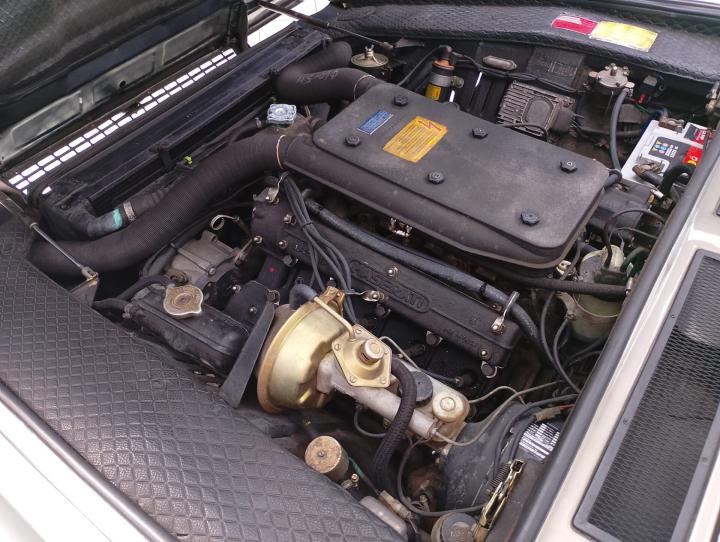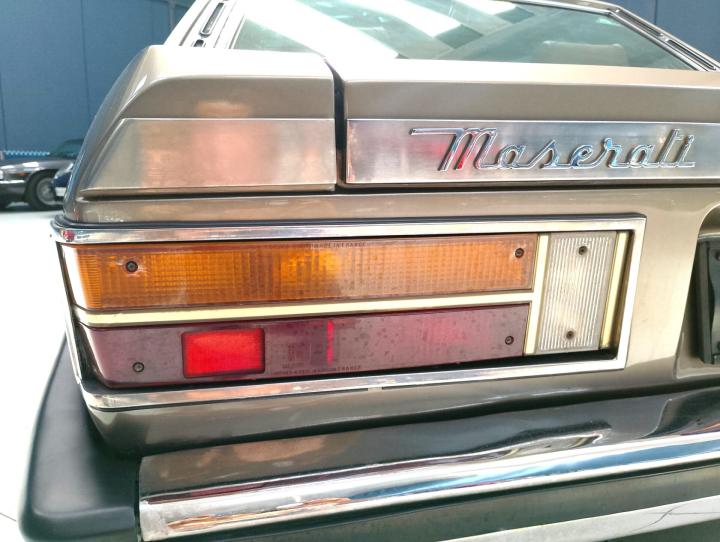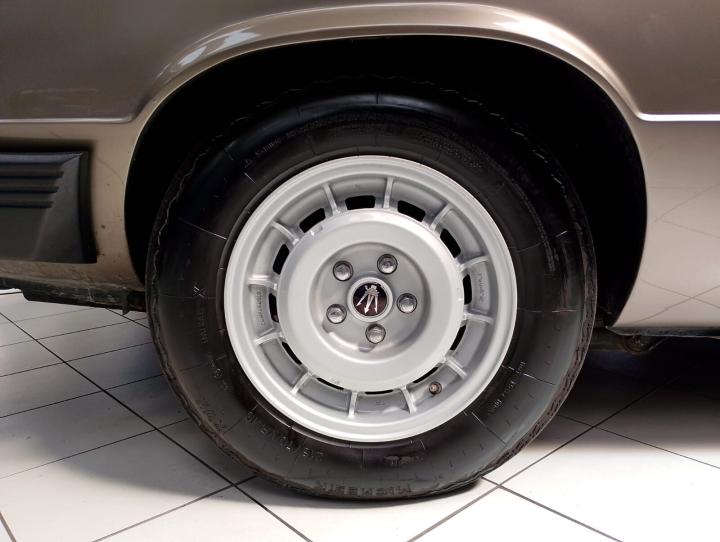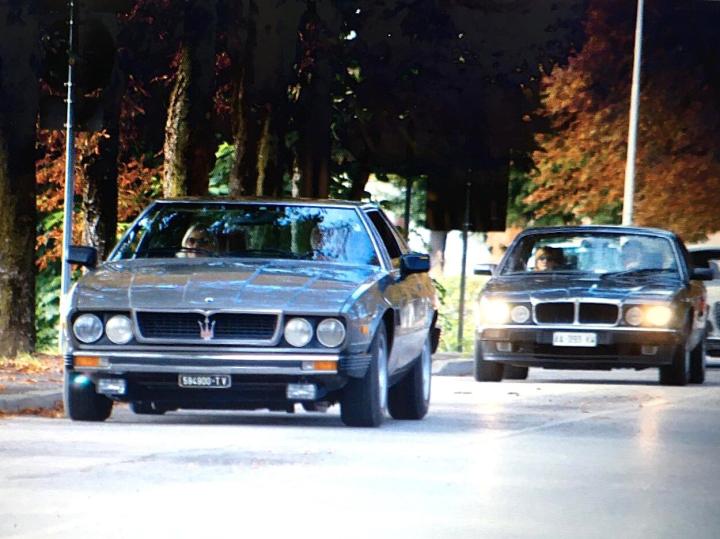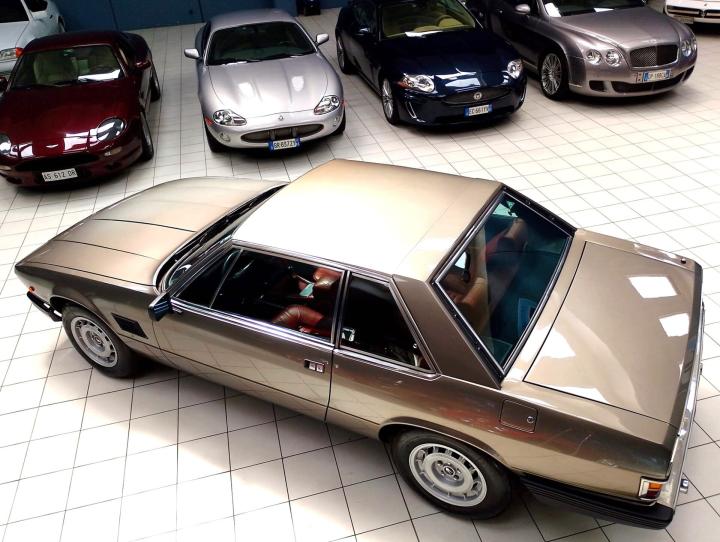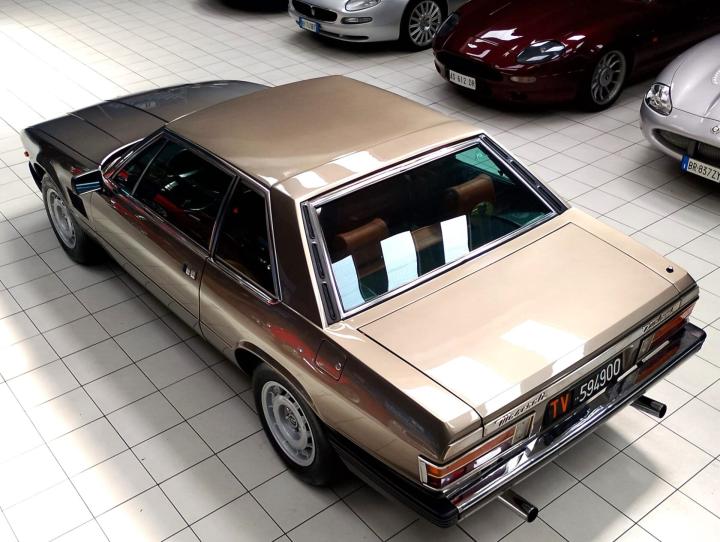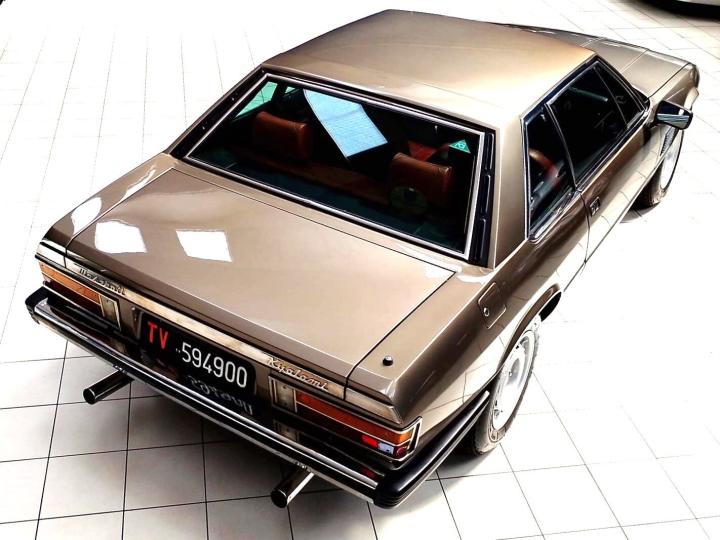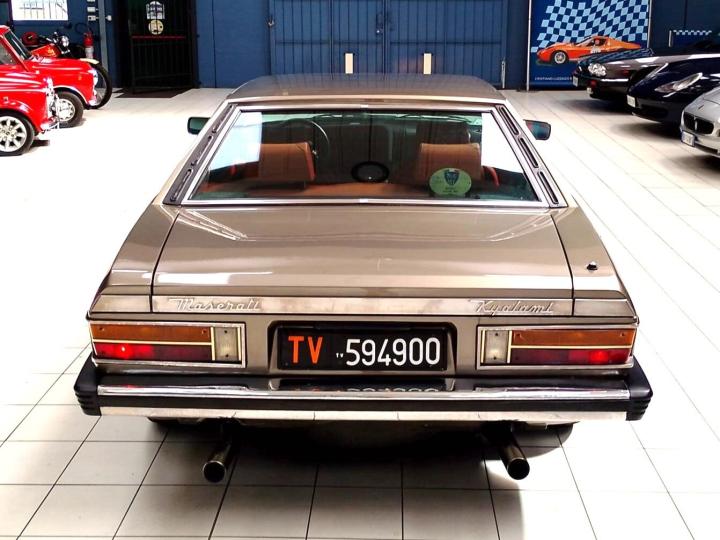MASERATI KYALAMI 4.9 – 1983
Left-hand drive – 1 of only 49 produced
This rare Maserati Kyalami 4.9 is one of just 49 examples built with left-hand drive and the powerful 4.9-litre V8 engine.
First registered in Bologna in 1983 by the official Maserati dealership Autosport, the car was transferred a few months later, on June 25, 1984, to its first private owner in Treviso. It remained in his prestigious vintage car collection for 34 years, lovingly maintained and preserved in excellent condition, before being sold to its second owner in 2018.
In 2003, the car was awarded the prestigious ASI homologation with Gold Plate, a recognition reserved for historically significant classic vehicles, and was issued an official certificate.
The vehicle comes complete with its original warranty and service booklet, documenting the maintenance history and scheduled services performed over the years.
The current owner is a well-known figure in the Maserati world, having served as a high-ranking executive at the company during the very period when the Kyalami was being developed and produced.
As part of the car’s documentation we have a handwritten memoir which we reproduce here in full:
“In 1975 G.E.P.I. (Gestione Partecipazioni Industriali), together with De Tomaso, took over Maserati from Citroën, which had put it into liquidation.
In my capacity as manager at Ernst & Ernst in Milan, I was tasked with auditing the latest financial statement and verifying the accuracy of the data.
Afterwards, I was offered by Maserati — with the approval of De Tomaso (I was already responsible for auditing Moto Guzzi) — the role of assistant to the chairman for corporate restructuring, head of personnel, administrative and financial director with full powers for purchases and sales; in effect, general manager. I accepted, and at 34 years old I went to Maserati.
The goal was to prove to the market that we were still vital; among the first projects was that of the KYALAMI (whose name is inspired by the South African circuit where Cooper, powered by a Maserati engine, had won).
At the time it was customary at Maserati to name the two‑door Coupés after circuits where victories had been achieved (Indy, Mexico, Sebring).
We undertook an operation common today, but never attempted at the time. We used the chassis of the De Tomaso Longchamp, re‑bodied and re‑engined it.
The bodywork was designed by Frua (he also designed the Mistral); for the front end he used his design for the Maserati Quattroporte, built for the Turin Motor Show in 1972, which had a 4.9‑litre V8.
The Aga Khan saw it and ordered an identical example, which was delivered to him in 1974.
The flanks, the lowered roof and the tail recall the design of the Fiat 130 Coupé.
The interior was completely redesigned and upholstered in fine Connolly leather.
The engine, initially a 4.2‑litre V8, was later replaced by the 4.9‑litre V8, which had achieved many victories.
The first car was presented at the 1976 Geneva Motor Show, while the definitive version, concurrently with the start of production, at the 1976 Turin show, where I persuaded them to adopt Campagnolo alloy wheels as fitted on the Maserati Bora:
One day in September 1976 the Mr. Manfredini, production manager, rushed into my office, telling me that the Kyalami destined for the Turin show had arrived, and that De Tomaso had ordered to install the Longchamp alloy wheels, as he had insisted for the Geneva show.
I told him to remove the four rims from a Bora in the warehouse and to bring them—without being noticed by De Tomaso—to the Kyalami.
I would distract him while Manfredini should replace the four wheels.
I went to the vehicle finishing department where the Kyalami was in metallic light blue bodywork; after greeting Mr. De Tomaso I congratulated him on the beauty of the car being prepared for the Turin show. Then I invited him to visit the chassis department, where Moto Guzzi frames were also in production. I needed to distract him so that Manfredini could complete the replacement of the wheels.
De Tomaso observed the chassis production and, after criticizing an excess of welding, picked up a file and showed the welder how he wanted the work done.
After about twenty minutes we returned to the Kyalami, on which in the meantime the wheel replacement had been carried out.
De Tomaso looked at the car, surprised, but before he could speak I anticipated, saying “Have you seen how beautiful it looks with the Bora rims? Besides, we spend nothing because we have about one hundred in stock.”
Knowing how prudent he was in expenses, I had little difficulty convincing him and getting his approval, with a big sigh of relief—from me, from Manfredini and from the technicians. In reality it was a bluff, because we had only five rims, but I had won for the image of the factory.
Maestro Pavarotti was a sponsor of the Kyalami (see attached photograph), he liked it very much for its comfort features combined with luxury and high performance.
Maserati was appreciated by great personalities such as Rascel, Alberto Sordi, Kim Novak, Moira Orfei, Gary Cooper, Peter Ustinov, Raoul Gardini, etc.
The production programme called for the construction of 200 examples and that is what happened.
126 were made with the 4.2‑litre engine and 74 with the higher‑performance 4.9‑litre V8.
Production ended in 1983; of the 74 produced, 25 were right‑hand drive and 49 left‑hand drive.
This car is equipped with air conditioning, electric windows, power steering and a battery‑cut‑off switch.
Built in 1983, it was bought by the AUTOSPORT dealership in Bologna and sold to a major publicly listed company whose owner was passionate about Maserati and who in 2003 obtained the ASI homologation with GOLD PLATE.
In 2017 it was sold to the Maserati Ferasin dealership for the purchase of a new Maserati.
In 2018 I myself, who was the architect of this model, became the second owner.
This car was the subject of a large journalistic feature in the specialist magazine AUTOCAPITAL in February 2020.
It has participated in the Trieste Concours d’Élégance, has won numerous trophies, earned recognitions, and taken part in many Maserati gatherings.”
Model history – Maserati Kyalami
Launched in 1976, the Maserati Kyalami marked a crucial transitional moment in the brand’s history. Designed by Pietro Frua and based on the De Tomaso Longchamp platform, the Kyalami was the first new model introduced under Alejandro De Tomaso’s ownership of Maserati.
The 4.9-litre version features a robust Maserati V8 engine producing over 280 hp, coupled with either an automatic or manual gearbox. Its name, “Kyalami,” pays tribute to the famous South African racetrack, reflecting the brand’s international racing spirit.
Only around 200 examples were produced between 1976 and 1983, with the 4.9 version being among the rarest and most sought-after today.
watch this car on our channel:

